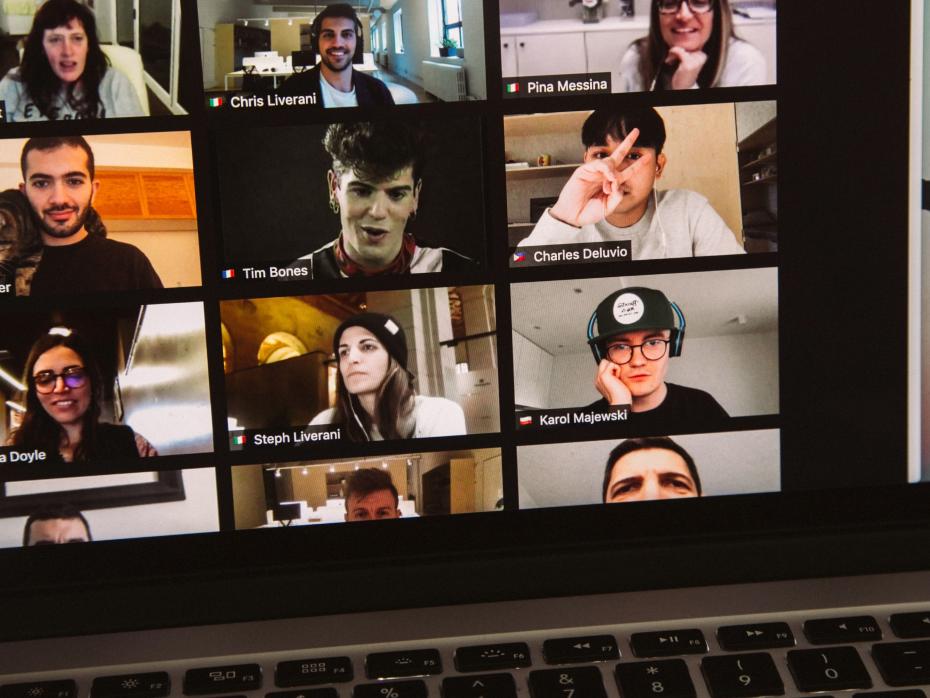
Two ed-tech trends that educators should watch for
The growth of ed-tech has sparked fresh approaches to teaching. Here, Vikas Nand Kumar Batheja shares two teaching trends worthy of educators’ attention

When designed and applied effectively, educational technology – or ed-tech – can increase students’ learning and understanding. It can help boost motivation, encourage collaborative learning and support the development of critical-thinking and problem-solving skills. Proper use of technology in the classroom gives students more control of their learning and tends to move classrooms from teacher-dominated environments to more learner-centred ones.
From a $107 billion (£78.5 billion) market in 2015, the industry is expected to triple by 2025 to be worth $350 billion as more people look for learning resources online. Analysts predict that growth will be led in large part by Asia’s growing youth population.
- How to assess if online tools will enhance learning experiences
- Top tips for selecting and implementing new technologies
- Three questions to ask before using a new digital resource
Here are two trends in ed-tech that institutions and academics should pay attention to when planning their future programmes.
Nanolearning
A growing teaching strategy, nanolearning is a bite-sized learning solution that provides sound bites or short excerpts of valuable and relevant content lasting five to 15 minutes via platforms such as YouTube, Snapchat, TikTok, Twitter, Instagram, text message and so on.
By providing students with small “pellets” of information, you can increase productivity, capture and retain their attention and aid their ability to learn. Although limited in length, these pieces of content should be frictionless and provide a springboard to further learning. Learners can scroll up and down or click on a notification to open, read and share learning content, making it more easily accessible and digestible.
To break down your course content so you can deliver material in five- to 15-minute chunks, look for e-learning tools that help you:
- create templates for bite-sized teacher-to-student interactions
- build a “theme” that you can personalise or adapt to your topic and needs
- work on the teaching content at the same time as other members of your team
- use an existing menu, for ready-to-use study material, so you don’t have to build your own
- access a database of media files (images, graphics, icons) that are ready to use and will enhance and enliven your content
- publish to your learning management system (LMS), learning record store (LRS) and any other relevant browsers and platforms that will aid easy student access
- create content that can be viewed immediately on a range of devices.
In higher education, research and teaching content goes through arduous approvals processes. Papers are published and peer reviewed, while subject matter experts (SMEs) usually have advanced degrees and a certain level of research and publication experience. This ensures that students learn from qualified experts who teach accurate, relevant information.
For effective nanolearning, instructors need not only substantial subject knowledge, but also exceptional course design and communication skills. The top educators will be judged more by their ability to create engagement and behaviour change rather than their impressive list of degrees.
Neuroeducation
Students today do not necessarily respond to the same stimuli or teaching strategies as their predecessors. This creates a challenge for teachers who need to adapt their approach for changing generations of students.
To develop effective engagement strategies, it is helpful to understand how the human brain works during learning, and this is where neuroeducation comes in.
Neuroeducation is the collaboration between educators and neuroscientists. This emerging discipline blends neuroscience, psychology, cognitive science and education to improve teaching methods and curricula. Some of the main applications of neuroeducation include:
Attention: In order to learn, you need to be able to focus sometimes for relatively long periods of time. Neuroscience can help inform educators how best to capture and maintain students’ attention to keep them focused on their learning, and resistant to distraction.
Memory: Science-based techniques to remember things better that everyone could benefit from applying include “interleaving” and “chunking”:
- “Interleaving” is an effective way of learning multiple related concepts in a mixed way. Say you have three topics (A, B and C) planned for the next five days. Instead of spending a whole lot of time on A, then moving on to the other topics, you spend “mini-blocks” of 20 minutes learning A, then B, then C, moving between the topics throughout.
- “Chunking” is breaking down information into meaningful groups, even if they come from different chapters. Organising information into useful collections can aid understanding by linking different pieces of information, creating a broader context for learning.
Executive control: This research looks at how humans develop the ability to plan ahead, creating a sequence of mental steps or actions. It involves retaining relevant, and changing, information for brief periods of time, which is crucial to learning and mental performance.
Social behaviour: A branch of neuroscience called social neuroscience is dedicated to understanding the relationship between social experiences, our biology and our behaviour. Learning can be a solo or group experience, and neuroscience can inform which approaches are most effective, depending on the learning goals.
Neurodiversity: Many people live with conditions such as ADHD (attention deficit hyperactivity disorder), dyscalculia (difficulty in making arithmetical calculations) and dyslexia, which can all have a huge impact on learning. Understanding these various conditions and how best to adapt the learning environment to meet people’s needs is also an important aspect of neuroeducation.
Very few universities currently teach these neuroeducation principles, yet having a basic understanding of the biological processes underlying the way we think, learn and make decisions should be considered mandatory. Some of the best apps to help you design and deliver courses and teaching based on some key lessons of neuroeducation are:
- Tinkercad: An easy-to-use, browser-based 3D design tool. With Tinkercad, you can create 3D printable items
- HaikuDeck: A presentation creation website and app (for iOS) that uses images, text, audio and video to make impactful presentations with “decks” of slides
- MindMeister: A web-based mind-mapping software. The mind maps you create are saved automatically in the cloud, online, and can be accessed from anywhere, as long as you have internet access
- Evernote: An app designed for note taking, organising, task management and archiving
- Socrative: A cloud-based student response system that allows teachers to create simple quizzes on laptops – or, more often, via classroom tablet computers or their own smartphones
- Animoto: A cloud-based video creation service that produces videos from photos, video clips and music into video slideshows, and customised web-based presentations.


